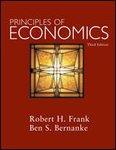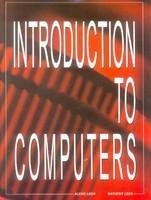 25.0%OFF
25.0%OFF

Download App
| >> | LShop | >> | Book | >> | Economics, Finance, ... | >> | Business & Managemen... | >> | Principles Of Econom... |
 25.0%OFF
25.0%OFF
PRINCIPLES OF ECONOMICS 3E
-
ISBN
:
9780070618299
-
Publisher
:
Tata Mcgraw Hill Education Private Limited
-
Subject
:
Business & Management
-
Binding
:
Paperback
-
Pages
:
901
-
Year
:
2005
₹
670.0
 25.0% OFF
25.0% OFF
₹
502.0
Buy Now
Shipping charges are applicable for books below Rs. 101.0
View DetailsEstimated Shipping Time : 5-7 Business Days
View Details-
Description
In recent years, innovative texts in mathematics, science, foreign languages, and other fields have achieved dramatic pedagogical gains by abandoning the traditional encyclopedic approach in favor of attempting to teach a short list of core principles in depth. Two well-respected writers and researchers, Bob Frank and Ben Bernanke, have shown that the less-is-more approach affords similar gains in introductory economics. Although recent editions of a few other texts have paid lip service to this new approach, Frank/Bernanke is by far the best thought out and best executed principles text in this mold. Avoiding excessive reliance on formal mathematical derivations, it presents concepts intuitively through examples drawn from familiar contexts. The authors introduce a well-articulated short list of core principles and reinforcing them by illustrating and applying each in numerous contexts. Students are periodically asked to apply these principles to answer related questions and exercisesKey Features:NEW Expanded Discussion of Macroeconomic Policy. NEW More Patient Presentation of Models: In Chapter 26 we explain the effects of tax cuts on planned aggregate expenditure more carefully. NEW Expanded Discussion of Supply-Side Economics: Most economists agree that changes in marginal tax rates can affect both aggregate demand and aggregate supply, but they disagree on the size of the effects NEW Greater Attention to Asset Prices: In Chapter 21 we provide a clearer explanation of the inverse relationship between bond prices and interest rates NEW Simpler Presentation of Exchange Rates: We use supply and demand curves to illustrate the determination of nominal exchange rates before we introduce the real exchange rate and purchasing-power-parity.
-
Author Biography
:Robert FrankReceived his B.S. from Georgia Tech in 1966, then taught math and science for two years as a Peace Corps Volunteer in rural Nepal. He received his M.A. in statistics and his Ph.D. in economics in 1972 from The University of California at Berkeley. He is the Goldwin Smith Professor of Economics at Cornell University, where he has taught since 1972 and where he currently holds a joint appointment in the department of economics and the Johnson Graduate School of Management. Ben Bernanke Received his B.A. in economics from Harvard University in 1975 and his Ph.D. in economics from MIT in 1979. He taught at the Stanford Graduate School of Business from 1979 to 1985 and moved to Princeton University in 1985, where he is the Howard Harrison and Gabrielle Snyder Beck Professor of Economics and Public Affairs, and where he is currently Chairman of the Economics Department. He has consulted for the Board of Governors of the European Central Bank and other central banks, and he serves on a U.S. State Department Committee that advises the Israeli government on economic policy. He is a Fellow of the Econometrics Society and a Research Associate for the National Bureau of Economic Research. He has been a visiting scholar at the Federal Reserve System in Boston, Philadelphia, and New York, and he is currently an advisor to the Federal Reserve Bank of New York. Professor Bernanke?s intermediate textbook, with Andrew Abel, Macroeconomics, Third Edition (Addison-Wesley, 1998) is a best seller in itsfield.Table of Content:PART I INTRODUCTION Chapter 1. Thinking Like an EconomistChapter 2. Comparative Advantage: The Basis for ExchangeChapter 3. Supply and Demand: An IntroductionPART II COMPETITION AND THE INVISIBLE HAND Chapter 4. ElasticityChapter 5. Demand: The Benefit Side of the MarketChapter 6. Perfectly Competitive Supply: The Cost Side of the MarketChapter 7. Efficiency and ExchangeChapter 8. The Quest for Profit and the Invisible HandChapter 9. International Trade PART III MARKET IMPERFECTIONS Chapter 10. Monopoly and Other Forms of Imperfect CompetitionChapter 11. Thinking Strategically: A Further Look at Monopolistic Competition and OligopolyChapter 12. Externalities and Property RightsChapter 13. The Economics of Information PART IV ECONOMICS AND PUBLIC POLICY Chapter 14. Labor Markets, Poverty, and Income DistributionChapter 15. The Environment, Health, and SafetyChapter 16. Public Goods and Tax Policy PART V MACROECONOMICS:ISSUEC AND DATA Chapter 17. Macroeconomics: The Bird?s-Eye View of the EconomyChapter 18. Measuring Economic Activity: GDP and UnemploymentChapter 19. Measuring the Price Level and Inflation PART VI THE ECONOMY IN THE LONG RUN Chapter 20. Economic Growth, Productivity, and Living StandardsChapter 21. Workers, Wages, and Unemployment in the Modern EconomyChapter 22. Saving and Capital Formation Chapter 23. Money,Prices and the Federal Reserve Chapter 24. Financial Markets and International Capital Flow PART VII THE ECONOMY IN THE SHORT RUN Chapter 25. Short-term Economic Fluctuations: An Introduction Chapter 26. Spending Output in the Short Run Chapter 27. Stabilizing the Economy: The Role of the Fed Chapter 28. Inflation, Aggregate Supply, and Aggregate Demand Chapter 29. The Practice and Pitfalls of Macroeconomic Policy PART VIII THE INTERNATINAOL ECONOMY Chapter 30. Exchange Rates and the Open Economy SummaryKey termsGlossaryIndex












 502.0
502.0












 0.0
0.0